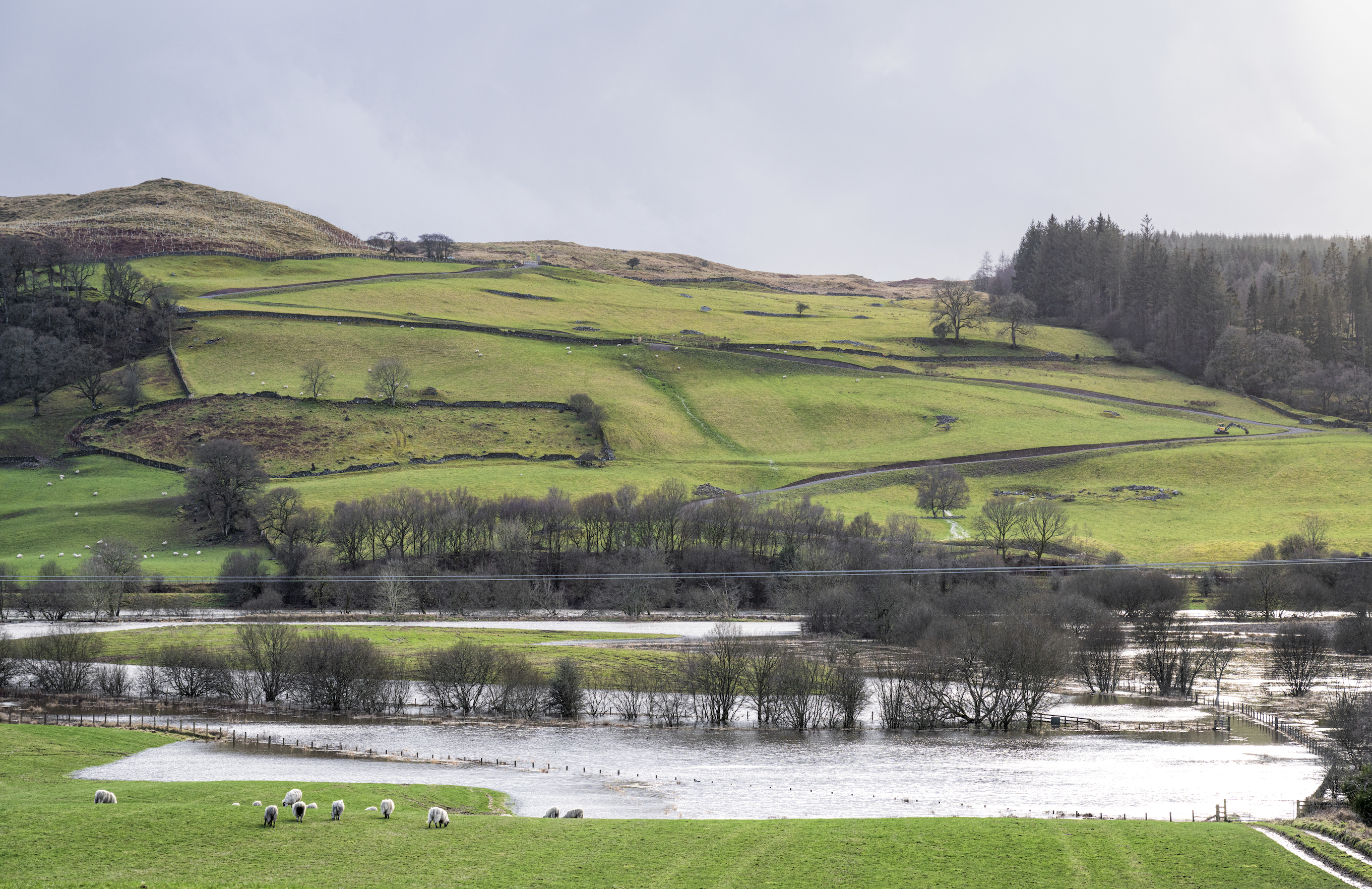Hydropower has played a critical role over the past century in connecting vast swathes of rural Scotland to the power grid, all by using its plentiful natural resources to generate electricity: steep mountains and hillsides, lochs and reliably heavy rainfall. Scotland now provides 85% of Great Britain’s hydro-electric resource, with a total generation capacity of 1,500 megawatt units (MW).
In recent years, there’s been a notable growth in small-scale hydro-electric schemes — that typically generate ~6 MW — installed by estate and property owners in the Scottish Highlands. The schemes take advantage of the hilly slopes and water runoff to generate clean energy, while simultaneously raising revenue and positive cash flow to offset the property’s expenses.
But as climate change perpetuates extreme weather events in both size and frequency, property owners and insurers alike face an unprecedented challenge: contending with the impacts severe flooding events are having on small-scale hydropower schemes. Is this renewable energy source truly insurable, and are the assets built robustly enough to withstand intensive weather patterns to come?
The innerworkings of a hydro scheme
A typical small hydro-electric power scheme comprises a turbine and electrical generator positioned within a pump house located at a low-level where water run-off is collected. The water run-off flows into a mechanical turbine (essentially a propeller) resulting in its rotation and the production of hydro energy utilised to power an electrical generator.
By nature, a pump house must be located at the bottom of a hill — as water flowing downhill is the mechanism that powers the turbine. As a result, there’s always potential exposure for the pump house to become flooded.
Flooding is highly problematic for several reasons. Electrical assets, like the generator and control panels, can easily be damaged or destroyed altogether by floodwaters, necessitating costly repairs or full-on replacement. Secondly, it can render a scheme unusable until fixed properly, amounting to a costly business interruption (BI) during the period — often several months at a time — that energy generation is suspended.
Any viable solution would be as costly — if not more so — than bearing the consequences when flooding occurs. Either engineers must redesign pump houses to be more robust, or property owners must invest the necessary funds to install flood resilience measures and ensure a pump house is as watertight as possible. Few mitigation options remain in between.
Climate change exacerbates severe weather patterns
Climate change continues to affect Scotland’s natural environment. Over recent decades, Scotland has experienced a warming trend that has both shifted rainfall patterns — including higher average annual rainfall and an increasing proportion of rain falling during heavy rainfall events — and contributed to rising sea levels.
An evidence report, the third UK Climate Change Risk Assessment (CCRA3), found that the risk of flooding to people, communities and buildings remains among the most severe risks for Scotland and is the costliest hazard to businesses. It also found that water, energy and transport infrastructure networks are at imminent risk of “cascading failures,” and infrastructure services are at risk of river and surface water flooding.
Such risks are expected to become more dire year by year. According to a March 2023 report published by the UK’s Climate Change Committee, by 2050 the UK is expected to have ~5% wetter winters on average, ~10% increased intensity of heavy rainfall, and a 10-30 cm increase in average sea levels — all making way for more acute river, surface and coastal flooding, and subsequent loss of transmission and distribution capacity due to flood damage.
Implications for insurers and insureds
For insurers, on the construction side, there is potential for large loss(es) to occur, and insurers must consider high-complexity risks to third-party property and the environment. Operationally, there is potential for large loss(es) to occur as well, due to inherent and environmental factors. Claims for small-scale schemes amount to around £1 to 2 million for site works, property damage works and BI.
Insurers are increasingly concerned about policy limits, and if the BI sum insureds are high enough to cover a potential loss — particularly as energy prices soar. If flooding and subsequent damage occurs more frequently, insurers will ultimately need to decide: Is insuring hydropower assets disproportionate to the risk?
Where hydro losses occur a multi-discipline team comprising of loss adjusters, forensic engineers, forensic accountants and environmental consultants with specialist training should be engaged. It’s critical to partner with an entity educated in emerging technology and local market/industry knowledge to assess repair versus replacement options and provide guidance.
Learn more — Read about Sedgwick’s recently-launched power and energy division in the UK.

